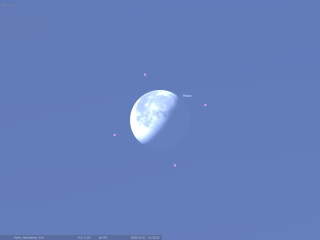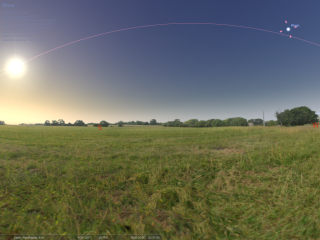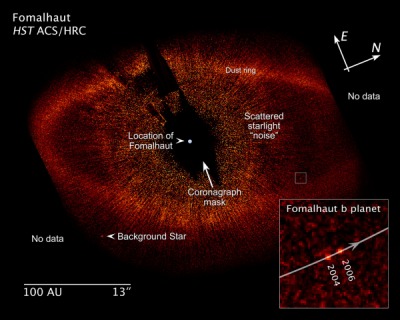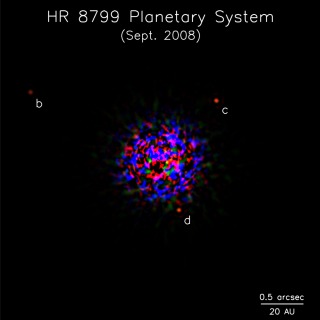
We bring you breaking news from the journal Science of two separate discoveries of extra solar planets - stars around other stars. The first discovery we report was made by a team using the Hubble Space Telescope. They compared images of the debris disc around the star Fomalhaut in 2004 and 2006 and made a direct observation of an extra solar planet. The second discovery was made by a team of Canadian, U.S. and British astronomers using the Gemini North and Keck telescopes in Hawaii. That discovery found three planets larger than Jupiter orbiting the star HR 8799.
In our main interview [05:14 - 21:47] we talk to Dr George Hobbs (Australia Telescope National Facility) about the ongoing attempts to detect gravitational waves using observations of pulsars spread over the sky. George tells us what evidence we have that gravitational waves are emitted by massive objects orbiting each other and about experiments such as LIGO and LISA that are trying to detect them. He then explains how the careful timing of signals from stable pulsars, in different directions on the sky, may be able to detect gravitational waves from colliding black holes.
In Ask an Astronomer [24:03 - 37:31] Tim answers your questions. This month the questions include:
- Malcolm Powell recently noticed a cresent Moon in the west and the Sun in the south-south-east. He wonders why the terminator (the line between the lit side and the dark side) of the Moon was not perpendicular to the line around the horizon joining the Sun and the Moon.
- Mark Ashley wants to know why people dismiss Modified Newtonian Dynamics (MOND). For more information on MOND listen to our interview with Dr Benoît Famaey from June 2007.
- Owen Graham asks if the temperature and density of the universe at the big bang was infinite, how is it now finite?
To help visualise the situation described in the first question here are some images from the excellent Stellarium:
The appearance of the Moon at the time and date in question relative to the horizon (i.e. horizon is horizontal some way below the Moon and out of the field of view):
A wide shot with the Sun and the Moon and the plane of the ecliptic drawn on as a curved line. You can see from this that the Moon would be illuminated along the ecliptic and so at an angle from the above left as the first close-up view shows:
Show Links
Ask an astronomer - from shadows to infinity and MOND.
- MP3: Download this segment individually (low and high bandwidth versions)
- Interview with Dr Benoît Famaey about MOND
Show Credits
| Interview: | Dr George Hobbs and Nick Rattenbury |
| Ask an Astronomer: | Dr Tim O'Brien and Nick Rattenbury |
| Presenters: | Nick Rattenbury and Stuart Lowe |
| Editors: | Nick Rattenbury and Stuart Lowe |
| Segment voice: | Danny Wong-McSweeney |
| Website: | Stuart Lowe |
| Cover art: | The large disk of gas surrounding Fomalhaut Credit: NASA, ESA and P. Kalas |
[an error occurred while processing this directive]

